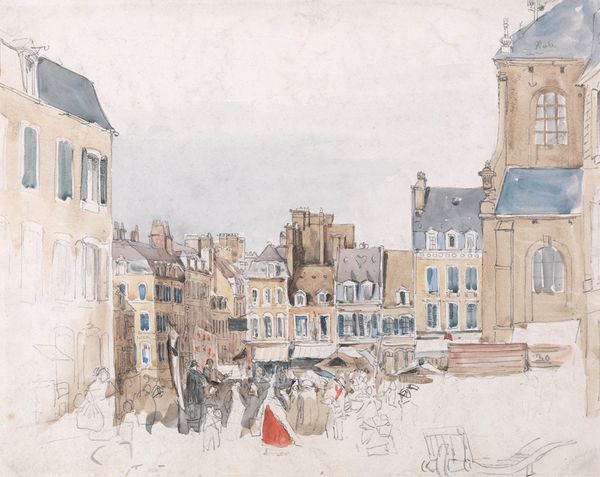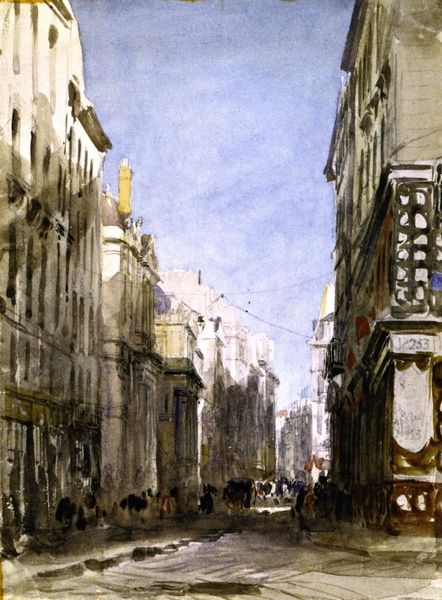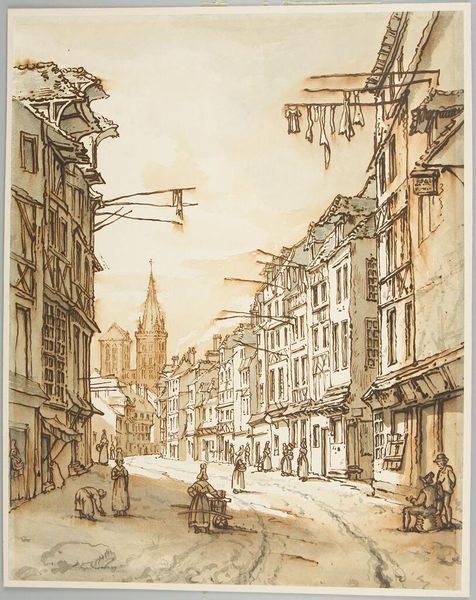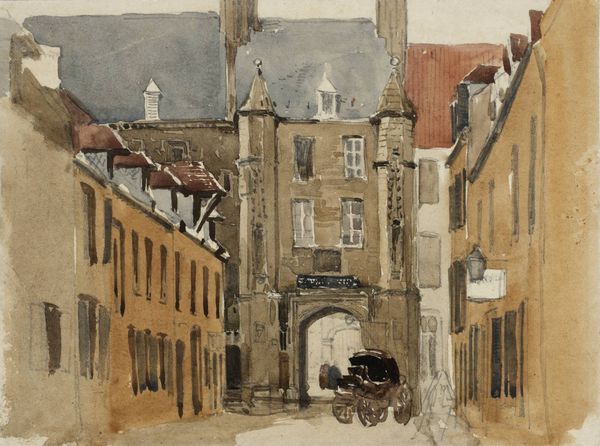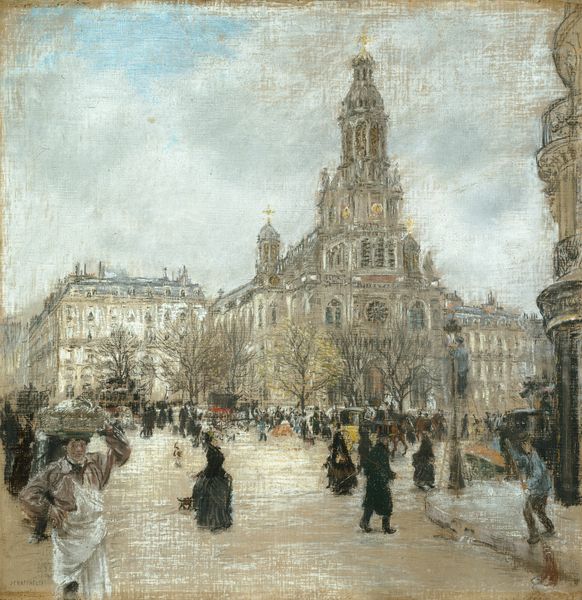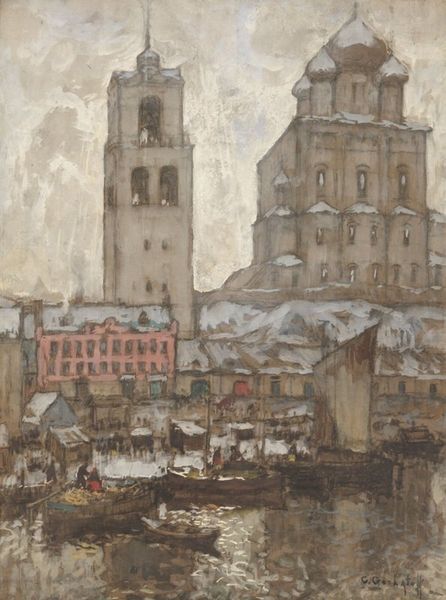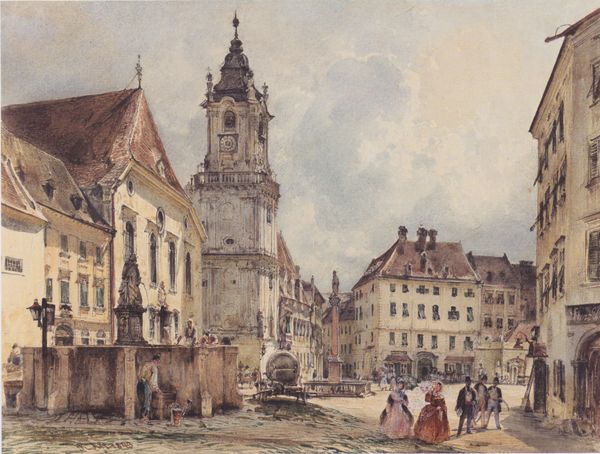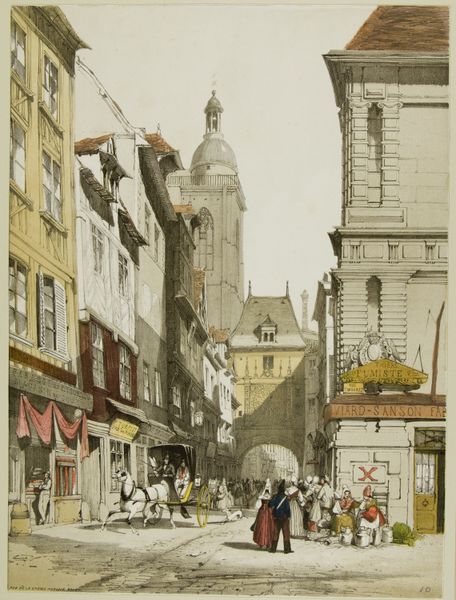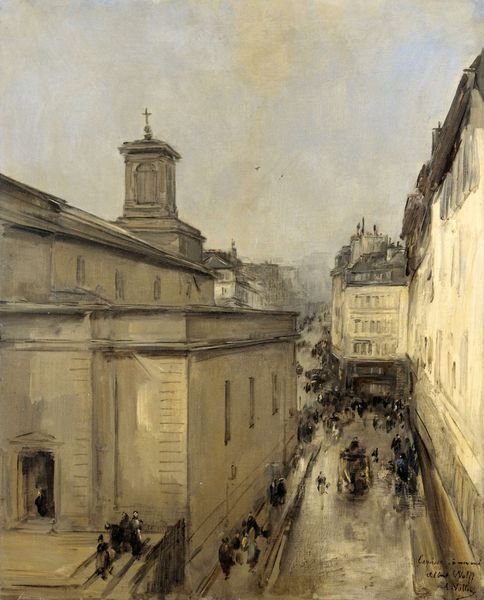
painting, watercolor, architecture
#
painting
#
street view
#
urban cityscape
#
oil painting
#
watercolor
#
site analysis
#
road
#
romanticism
#
cityscape
#
genre-painting
#
street
#
watercolor
#
architecture
#
building
Copyright: Public domain
Curator: David Cox's "Calais. Street Scene with Lighthouse," painted in 1832, offers a glimpse into a bustling urban environment through the medium of watercolor. Editor: Immediately, the tall buildings and the hazy light give a sense of a confined space. There's a lot of verticality here, emphasizing human smallness. Curator: That interplay of scale resonates. Consider Calais in the 1830s: a port city grappling with industrial expansion, social stratification, and shifting political allegiances in post-Napoleonic Europe. Editor: I am drawn to the lighthouse and the church spires jutting upwards. They symbolize hope, faith, but perhaps also power structures overseeing daily life in Calais. The symbols seem placed precariously near to each other. Curator: Indeed. And observe how the figures are rendered. Largely anonymous, they reflect the working class and their place within this growing urban machinery. Their dark garments seem to blend into the scene. Is that deliberate on the part of the artist? Editor: The blurring, suggestive style heightens that anonymity. Cox reduces each person to his or her cultural uniform. Everyone wears a costume that communicates position within the community. This street is more of a theater than a living city. Curator: Absolutely. In considering Romanticism's broader engagement with rapid societal transformation, Cox seems interested in questioning and grappling with that societal cost to the individual through the use of archetypes. The image speaks of larger universal forces. Editor: This watercolor technique mimics a fleeting, dissolving past. Each spire and roof threatens to turn to dust. Perhaps Cox intends for us to feel this temporality, not just see the beauty, but confront the city's cultural and temporal fragility as well. Curator: I agree. Reflecting upon it, this piece certainly highlights the complex layers inherent to our interactions with cityscapes: from gendered labor to class disparities, all shaped by dominant ideologies. Editor: Ultimately, the painting leaves us to wonder how memory and identity intertwine and perhaps conflict within rapidly evolving cities, much like Calais in the nineteenth century.
Comments
No comments
Be the first to comment and join the conversation on the ultimate creative platform.

